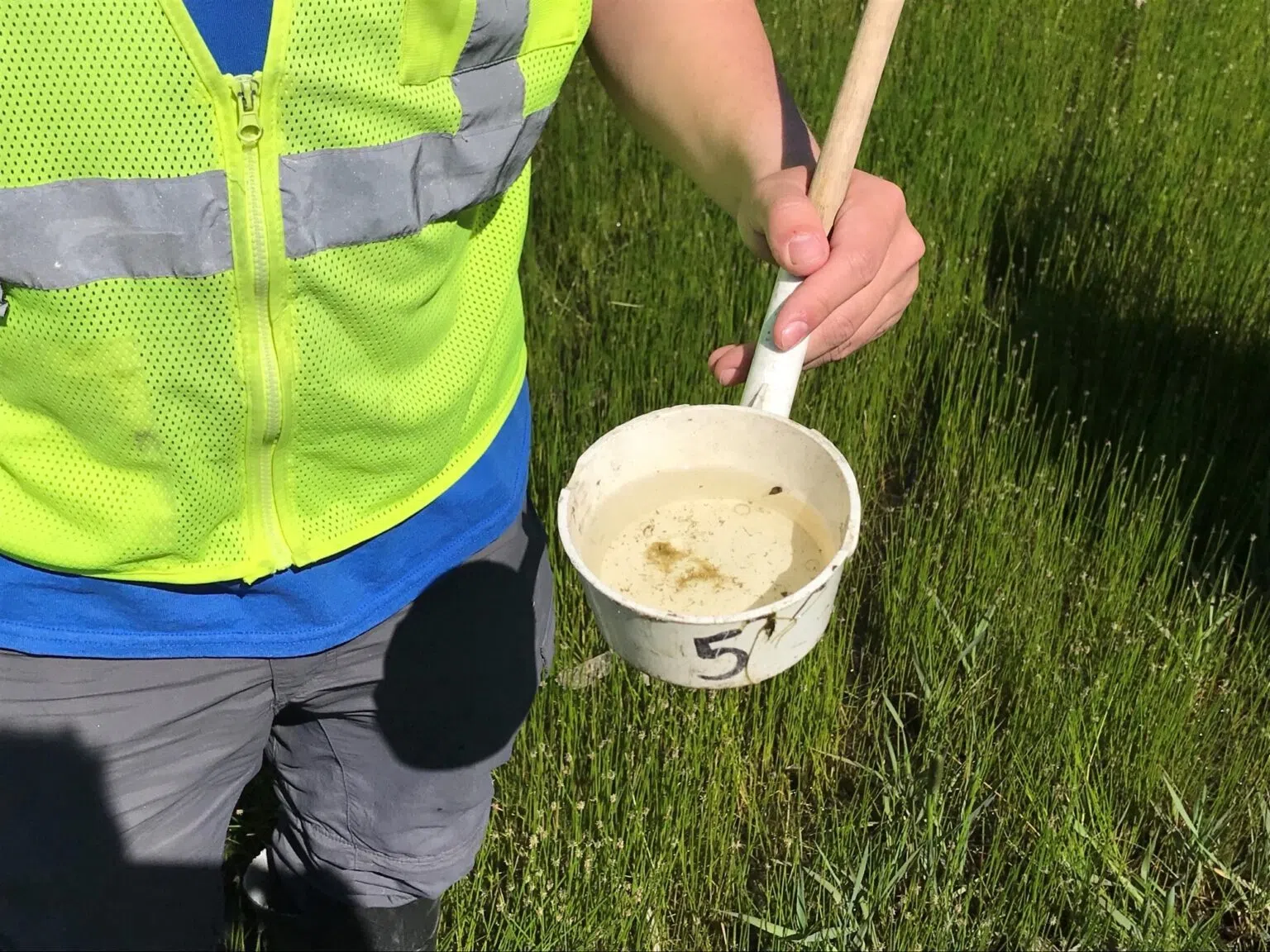
Cass County Vector Control (contributed/via North Dakota Monitor)
BISMARCK, N.D. (NORTH DAKOTA MONITOR) – Cases of West Nile virus are springing up earlier this year in North Dakota due to wet weather creating prime mosquito breeding grounds, according to a state health official.
Fourteen human cases of West Nile virus, including three cases requiring hospitalization, have been reported in the state this summer. Cases have been identified in nine counties: Cass, Burleigh, Hettinger, McLean, Mercer, Richland, Morton, Kidder and Stutsman. Most cases have been reported since mid-July, with cases nearly doubling this week.
The virus is likely popping up earlier due to a rainier-than-normal summer creating more stagnant water pools, said Amanda Bakken, West Nile virus surveillance coordinator for the Department of Health and Human Services. The virus typically begins spreading in late August or September, she said.
“I think we are on track to certainly have more cases than last year,” she said.
In 2024, North Dakota reported 38 human cases of West Nile virus, down from 58 in 2023, according to state data.
Bakken said most of the West Nile cases so far this year have been non-neuroinvasive, which means they haven’t been the most severe types of cases.
West Nile virus is typically spread by mosquitoes and birds. Most people who become infected do not develop any symptoms, according to the Department of Health and Human Services. About one in five people who contract West Nile will develop a fever, headache or body aches. About one in 150 people could develop serious symptoms that include swelling of the brain that could be fatal.
As of Thursday, only three cases involved people over 60 years old. Older people are typically more susceptible to severe symptoms, Bakken said.
Cass County has six cases, more than any other county.
Ben Prather, Vector Control Director for Cass County, said the increasing numbers of mosquitoes and cases of West Nile are putting the state on a “bad trajectory.”
His team has been spraying for the pests more frequently and will continue to trap and test the bugs for the disease while mosquitoes remain at elevated levels.
“We’re firing on every cylinder right now,” Prather said.
In ground testing, Cass County Vector Control is seeing increases in the species of mosquito that typically transmits the virus, but that doesn’t necessarily translate directly to higher human cases, Prather said.
Bakken said there is no statewide vector control program for North Dakota. Typically, larger cities and counties have implemented their own mosquito control measures because they levy tax dollars to pay for the program, she said.
Some vector control districts avoid spraying during the peak migration of monarch butterflies, which is expected in North Dakota during the third week of August, Bakken said.
Mosquitoes also need to be taken seriously because they can spread other diseases, such as St. Louis encephalitis, Eastern equine encephalitis and Western equine encephalitis, Bakken said.
She encourages all North Dakotans to take precautions to avoid attracting mosquitoes, such as maintaining their landscapes and ensuring all doors, windows and screens are secure.
Prather advises wearing long sleeves and pants, applying bug spray and staying away from buggy areas during dawn and dusk. He added residents can also talk to local vendors in their area to schedule a spraying of their property.
“Be prepared and assume everything is a flying needle of West Nile,” he said. “I’m not really looking forward to the second half of August.”







Comments